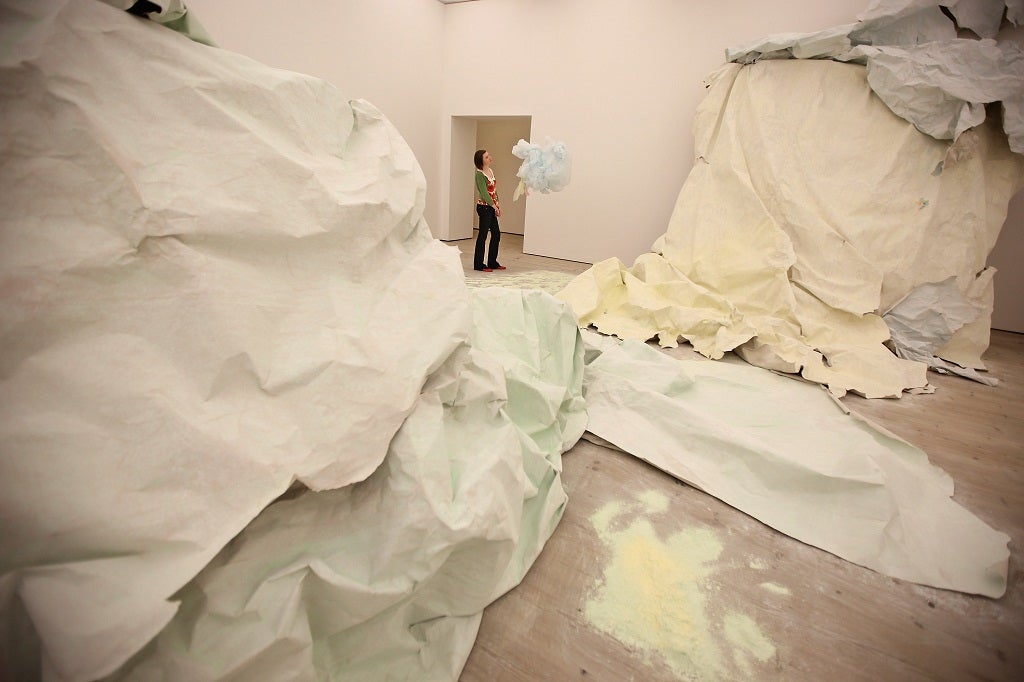The US and Germany fund galleries outside their capital. Why do we think only of London?
We must convince funders that there is life - and art - outside the capital

Britain is one of the most centralised countries on earth. In far too many areas, life begins and ends in the capital. I say that as a Londoner proud of the city, but not of its dominance on political and economic life.
In one area, the hegemony has been gradually loosened. In the arts, thanks to sustained and sensible funding, galleries, theatres and music venues have given a new lease of life to cities and towns from Newcastle to Bristol, from Wakefield to my adopted Margate.
Now that’s being threatened by what Nick Hytner, the Director of the National Theatre, calls the “double whammy”. Not only was central government money cut for some institutions in the last Arts Council funding round, but now a number of local authorities are severing the link as well.
Newcastle City Council is the latest, planning to cut all funding to arts organisations in the city, including the Theatre Royal, Northern Stage and Live Theatre. It is following a pattern set by Somerset County Council to axe its entire arts budget. Other cities, districts and counties are thinking of following suit. Almost all local authorities have had to make savings of some sort in their grants to the sector.
At first glance, the move is understandable. Councils are shedding services across the board in a desperate bid to stay within extremely tight budgets. Amid cuts in social programmes, such as children and youth services, what is so sacrosanct about artistic institutions?
Few would argue that present levels of funding could realistically have been sustained. Nor do I share the conventional wisdom among many in the arts establishment that cultural organisations are automatically entitled to state subsidy.
Renaissance
A mix of public and private is the healthy solution; any arts organisation unable to entice donations from individuals or corporations, wherever they’re based, no matter how challenging the circumstances, and in some way to make money from some of their activities (through special shows or private hiring of spaces) should ask themselves whether they are being properly run.
What is particularly frustrating, however, is the notion that the best the UK can offer inevitably resides in the capital. For sure, the blue riband institutions such as the Tate, National Gallery, National Theatre and Royal Opera House attract the most attention, but Britain is in the midst of a cultural renaissance outside London. The task is to convince big funders – public and private – of the merits of the case. I cannot speak for drama or other genres, but the visual arts are booming. From the Baltic in Gateshead, to the Ikon in Birmingham, from Modern Art Oxford to the Hepworth in Wakefield, curators and directors are responsible for some of the strongest exhibitions anywhere in the country. The Tate blazed a trail two decades ago with its smaller galleries in Liverpool and St Ives.
The best galleries are not “regional”. They are national institutions that happen to be based outside the metropolis. In other countries, that would not be considered an oxymoron. The US and Germany have long embraced and promoted culture outside the capital.
The experience of Turner Contemporary in Margate, which I chair, has been extraordinary; but it is not unique. Kent County Council, working with the Arts Council, took an enormous political and economic gamble in commissioning the design of a new gallery on the sea front of a town that had lost its confidence. Margate ranked towards the bottom of several demographic league tables – from high street vacancies to public health to employment and education – and that was during a time of national plenty.
Against a vocal minority of resistance, the gallery opened its doors in April 2011, quickly establishing itself on the national scene. In its first year, it received just short of half a million visitors, making it one of the country’s most popular visual arts institutions.
Myopic
The gamble paid off, handsomely. Yet the temptation would have been, as the going got tougher, to slash funding. In the end, the council was prevailed upon to restrict cuts to below 10 per cent. The arguments we deployed were not sentimental. We demonstrated that, as with the best examples elsewhere in the country, the gallery has served as a catalyst for economic renewal.
Council money is not largesse but hard-headed investment in the cultural industries which will be at the heart of economic growth. This message was sent loud and clear at a conference last week held at the National Theatre in London, where leaders of 22 English regional theatres described the transformational effect of thriving performing arts. Fresh from his triumphant Olympic opening ceremony, Danny Boyle argued that theatres provided “something else to believe in; something in our cities and towns that isn’t Wetherspoon and Walkabout pubs and Mario Balotelli and John Terry”.
As Hytner pointed out, arts funding comprises 0.1 per cent of total public expenditure. The Government is right to expect high levels of professionalism. There is nothing ignoble about private funding. But there is everything myopic and self-defeating about failing to support one area of public life that invariably delivers the goods – for visitors and for broader communities.

Join our commenting forum
Join thought-provoking conversations, follow other Independent readers and see their replies